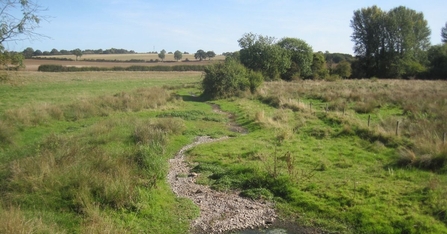A new report, Embracing Nature, published today by The Wildlife Trusts, identifies drought as the current leading threat to their nature reserves for the first time. The Wildlife Trusts, who are among the UK’s largest landowners with 2,600 nature reserves covering nearly 100,000 hectares (ha), also point to pollution, invasive species and habitat fragmentation as high risks. Drought is also considered to be the leading threat for the next 30 years, followed by other climate-driven dangers such as heatwaves and wildfires.
The report focuses on adapting to climate change and highlights that, based on a trajectory of 2°C warming by 2100, almost half of The Wildlife Trusts’ 2,600 reserves will be in areas of extreme wildfire risk, and three-quarters will see summer temperatures rising by an additional 1.5°C in the next 25 years.
In Hertfordshire and Middlesex, adaptation work is being undertaken across the Trust’s nature reserves, as well as on public and private land to re-connect and regenerate habitats to help nature cope with weather extremes. Chalk rivers and wetlands, woodlands and grasslands are some of the habitats being restored to support species at risk such as Water Voles, Brown Trout and critically endangered Scarce Tufted-sedge, through severe weather. For example:
- Scarce Tufted-sedge is only found at one Hertfordshire site, within the whole of the UK. Historically the plant would have grown in tussocks in water-logged habitats but within its boggy habitat, the squelch is starting to disappear and it is that sogginess that the plant needs to survive. Thanks to funding from Natural England’s Species Recovery Programme, the Trust is working to ensure the plant escapes extinction. Through a programme of surveying, habitat preparation, and then assisted colonisation, the Trust will deliver four distinct populations of Scarce Tufted-sedge across Hertfordshire.




